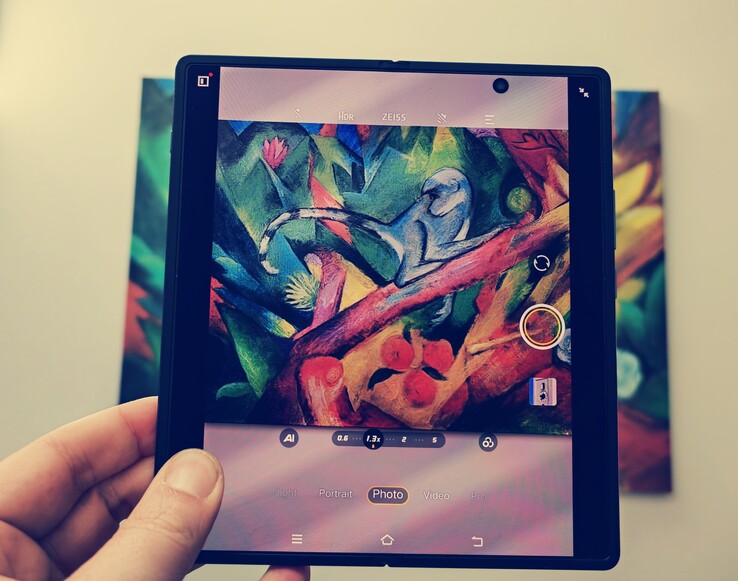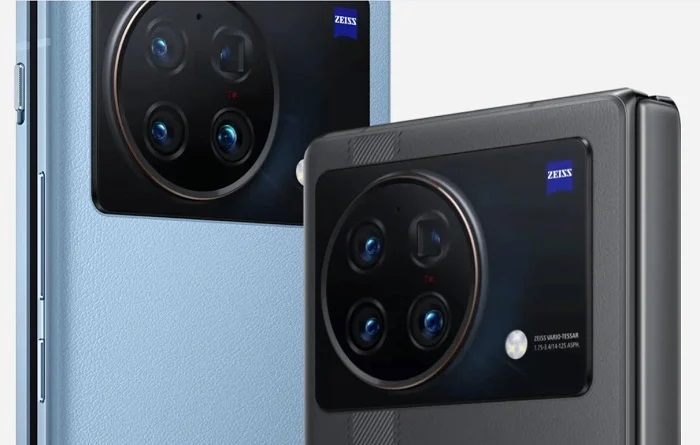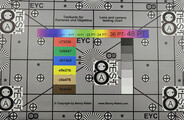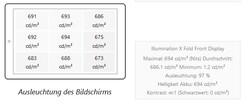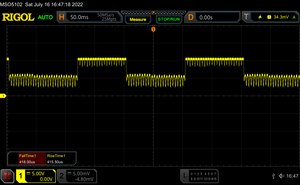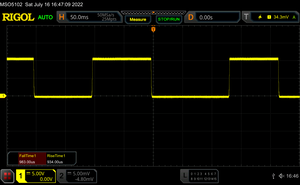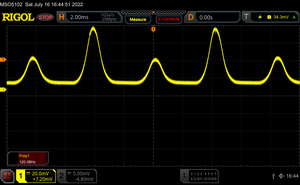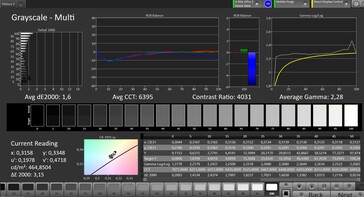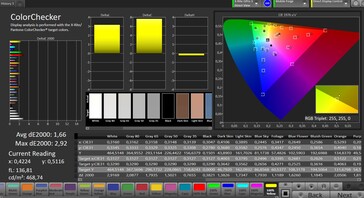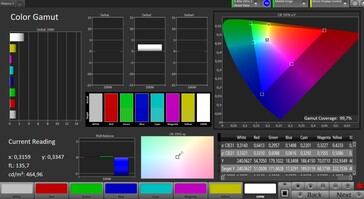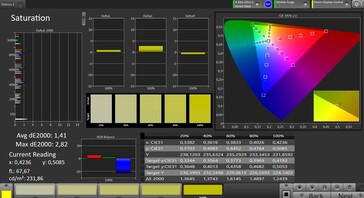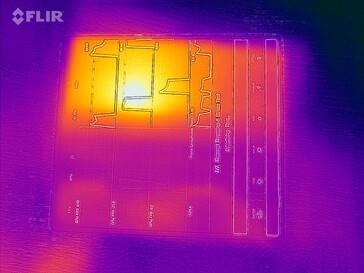Vivo X Fold Smartphone Review: The folding phone is flexible with screen and camera
Possible competitors in comparison
Rating | Date | Model | Weight | Drive | Size | Resolution | Price |
|---|---|---|---|---|---|---|---|
| 86.9 % v7 (old) | 08 / 2022 | Vivo X Fold SD 8 Gen 1, Adreno 730 | 311 g | 256 GB UFS 3.1 Flash | 8.03" | 2160x1916 | |
| 88.9 % v7 (old) | 09 / 2021 | Samsung Galaxy Z Fold3 5G SD 888 5G, Adreno 660 | 271 g | 256 GB UFS 3.1 Flash | 7.60" | 2208x1768 | |
| 87.5 % v7 (old) | 07 / 2022 | Vivo X Note SD 8 Gen 1, Adreno 730 | 221 g | 512 GB UFS 3.1 Flash | 7.00" | 3080x1440 | |
| 84.3 % v7 (old) | 02 / 2022 | Microsoft Surface Duo 2 SD 888 5G, Adreno 660 | 284 g | 256 GB UFS 3.1 Flash | 8.30" | 2688x1892 |
Case and equipment: Heavy but of high quality
Foldable smartphones are a great thing: They are quite handy when folded, but the screen can expand to almost tablet-sized when unfolded.
The Vivo X Fold is actually more expansive than its big competitor from Samsung, the Galaxy Z Fold3, when open but is somewhat smaller when compared to the screen of the Microsoft Surface Duo 2, although Microsoft cannot offer a completely continuous display. You also have to be prepared to carry more weight than a conventional smartphone — the Vivo X Fold is particularly heavy at 311 g.
The back of Vivo's foldable is covered in vegan leather, i.e. artificial leather, which looks to be of very high-quality and even gives the impression of a seam in the decorative stripe that runs vertically over the casing with a slight offset to the left. Blue and black are available as colors, wherein these refer to the back and the frame.
The frame is made of aluminum, and the protective Xensation Alpha glass is supplied by the German manufacturer Schott. It is supposed to be better than other protective glasses in terms of scratch resistance and drop resistance. A flexible plastic glass from Schott is also used on the inside as well as for the protective glass of the cameras on the back.
The Vivo X Fold is currently only available as a Chinese import. Although it can be purchased in China for the equivalent of €1,300, the import prices at our partner TradingShenzhen are significantly higher at just under €1,600.
In return, you get a superbly equipped high-end phone with 12 GB of RAM and 256 GB of mass storage — a 512 GB version is also available internationally. Small gimmicks like the physical alert slider on the casing and an infrared sensor that can also be used to control TVs are nice features.
Communication, software, and operation: Software well-suited for the West
Fortunately, even as a Chinese import, the Vivo X Fold supports all necessary 4G bands for Central Europe and should also be able to access the 4G network in almost every country worldwide. 5G is also supported with numerous bands. During our test, we randomly checked the device's reception and compared it with other high-end phones, and found that the phone has full 4G reception even indoors.
Wi-Fi 6E is not supported, so the Vivo X Fold cannot transmit data in the 6 GHz band. Even so, it achieves good, stable transmission rates. The phone only shows a small drop during our test with the reference router Asus ROG AXE11000.
Origin OS Ocean is the name of the UI that the manufacturer installs. It is based on Android 12 but is strongly adapted to the Chinese market. Nevertheless, languages such as English or German can also be selected and even Google Services can be enabled via an option in the account menu, so you can use the Google Play Store and other Google apps relatively easily. Even Google Pay is possible, as well as all important streaming services in their entirety thanks to the Widevine certification
However, it should be noted that the system is not optimized for the Western market out-of-the-box. There are numerous Chinese apps preinstalled, though most of them can be uninstalled quite easily. Even with the language selection adjusted, you do get Chinese notifications every now and then where you have to make a selection. If you are someone who does not speak Mandarin, you do not know what the system wants from you.
Since both displays support 120 Hz, the operation runs very smoothly and also very precisely. The crease in the center of the folding display is slightly noticeable and also inhibits the finger from gliding a bit, but the inner touchscreen can be operated very well in general.
Vivo has installed two under-display fingerprint sensors — one in the outer display and the other on the right side of the screen. You only have to register the fingerprint on one of the two sensors and can then use it on both. They work very accurately and quickly even when the screen is turned off. 2D facial recognition can also be used and works without problems, but it is not quite as secure.
| Networking | |
| iperf3 transmit AX12 | |
| Samsung Galaxy Z Fold3 5G | |
| iperf3 receive AX12 | |
| Samsung Galaxy Z Fold3 5G | |
| iperf3 transmit AXE11000 | |
| Microsoft Surface Duo 2 | |
| Vivo X Fold | |
| Vivo X Note | |
| iperf3 receive AXE11000 | |
| Microsoft Surface Duo 2 | |
| Vivo X Fold | |
| Vivo X Note | |
Cameras: Two selfie cameras at once
The Vivo X Fold's main camera is a 50 MP sensor from Samsung that was optimized in cooperation with Zeiss. The Isocell GN5 is a high-end sensor with optical image stabilization and fast autofocus. It usually takes 12.5 MP pictures because 4 pixels each are combined into a brighter pixel, but full-resolution pictures can also be created on request.
Pictures with the main camera offer a good, vivid color representation with a good amount of detail, but the picture could overall still be a bit sharper. A slight graininess in the clouds is noticed in the surroundings. We like the picture quality in low-light — the image sharpness is mostly good and dark areas are also brightened very well.
A periscope camera, also with an optical image stabilizer, is also available. Our 18x zoom shot shows that quite impressive results can be achieved with it. Macro shots can be taken at 12 MP — the camera even offers 2x optical zoom and captures good, detailed super-close images.
The wide-angle 48 MP camera takes decent pictures, but you should not enlarge them too much lest the detail representation decreases significantly. In general, the camera setup of the Vivo X Fold is very flexible and good pictures can be taken with it.
The main camera records videos at a maximum of 8K at 30 fps. At up to 1080p and 30 fps, the periscope camera and the wide-angle lens for a hybrid zoom can also be used during recording. At 4K and 60 fps, only the wide-angle camera can be used. Pictures are decent even in low light, and the autofocus also does its job very well.
The two front cameras have slightly different fields of view and also come from two different manufacturers, namely Hynix and Samsung. The outer selfie camera draws details rather softly, while the inner selfie camera sharpens. Generally, good selfies can be taken with both cameras.
Image comparison
Choose a scene and navigate within the first image. One click changes the position on touchscreens. One click on the zoomed-in image opens the original in a new window. The first image shows the scaled photograph of the test device.
Hauptkamera BlumeHauptkamera UmgebungHauptkamera Low LightWeitwinkelkamera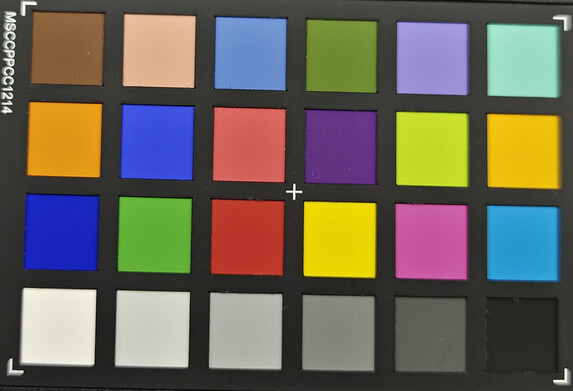
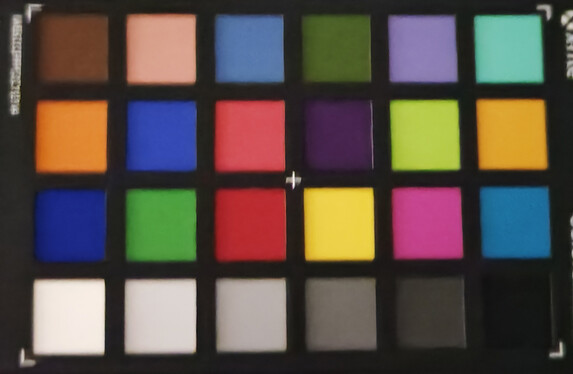
Display: Double screen pleasure
Due to its design, the Vivo X Fold is equipped with two displays: The front features an AMOLED screen with a resolution of 2,120 x 1,080 pixels in a 21:9 format. The screen can refresh at 120 Hz and thus enables a smooth scrolling experience.
More exciting, though, is the foldable main display with a 9:8 aspect ratio and a resolution of 2,160 x 1,916 pixels. This is also a 120 Hz AMOLED screen. Vivo has managed to keep the crease in the center of the screen subtle, so it is only really visible when there are reflections on the screen. At the same time, the display has quite good anti-reflective properties.
The format is very practical for documents and websites. Except for old 4:3 movies, however, you almost don't get anything out of your large display because 16:9 content is hardly displayed larger than on a phone with a conventional aspect ratio.
The brightness sensor proves to be very problematic in our test and seems reluctant to set the brightness to full even in very strong ambient light. With 730 cd/m², the Vivo X Fold does not reach the brightness levels of the Vivo X Note. However, the phone's color reproduction is quite accurate.
| |||||||||||||||||||||||||
Brightness Distribution: 95 %
Center on Battery: 730 cd/m²
Contrast: ∞:1 (Black: 0 cd/m²)
ΔE ColorChecker Calman: 1.66 | ∀{0.5-29.43 Ø4.78}
ΔE Greyscale Calman: 1.6 | ∀{0.09-98 Ø5}
99.7% sRGB (Calman 2D)
Gamma: 2.28
CCT: 6395 K
| Vivo X Fold AMOLED, 2160x1916, 8" | Samsung Galaxy Z Fold3 5G Dynamic AMOLED, 2208x1768, 7.6" | Vivo X Note AMOLED, 3080x1440, 7" | Microsoft Surface Duo 2 AMOLED, 2688x1892, 8.3" | |
|---|---|---|---|---|
| Response Times | -339% | -11% | -153% | |
| Response Time Grey 50% / Grey 80% * (ms) | 1.8 | 10.4 ? -478% | 1.09 ? 39% | 2.8 ? -56% |
| Response Time Black / White * (ms) | 0.8 | 2.4 ? -200% | 1.28 ? -60% | 2.8 ? -250% |
| PWM Frequency (Hz) | 120 | 245.1 ? | 359.1 | 373.1 |
| Screen | -25% | 29% | -46% | |
| Brightness middle (cd/m²) | 730 | 808 11% | 997 37% | 663 -9% |
| Brightness (cd/m²) | 724 | 820 13% | 1005 39% | 661 -9% |
| Brightness Distribution (%) | 95 | 97 2% | 96 1% | 98 3% |
| Black Level * (cd/m²) | ||||
| Colorchecker dE 2000 * | 1.66 | 2.9 -75% | 0.7 58% | 3.5 -111% |
| Colorchecker dE 2000 max. * | 2.92 | 4.2 -44% | 2.2 25% | 5.3 -82% |
| Greyscale dE 2000 * | 1.6 | 2.5 -56% | 1.4 12% | 2.7 -69% |
| Gamma | 2.28 96% | 2.01 109% | 2.22 99% | 1.93 114% |
| CCT | 6395 102% | 6359 102% | 6528 100% | 6503 100% |
| Total Average (Program / Settings) | -182% /
-103% | 9% /
19% | -100% /
-73% |
* ... smaller is better
Display Response Times
| ↔ Response Time Black to White | ||
|---|---|---|
| 0.8 ms ... rise ↗ and fall ↘ combined | ↗ ms rise | |
| ↘ ms fall | ||
| The screen shows very fast response rates in our tests and should be very well suited for fast-paced gaming. In comparison, all tested devices range from 0.1 (minimum) to 240 (maximum) ms. » 2 % of all devices are better. This means that the measured response time is better than the average of all tested devices (20.2 ms). | ||
| ↔ Response Time 50% Grey to 80% Grey | ||
| 1.8 ms ... rise ↗ and fall ↘ combined | ↗ ms rise | |
| ↘ ms fall | ||
| The screen shows very fast response rates in our tests and should be very well suited for fast-paced gaming. In comparison, all tested devices range from 0.165 (minimum) to 636 (maximum) ms. » 8 % of all devices are better. This means that the measured response time is better than the average of all tested devices (31.6 ms). | ||
Screen Flickering / PWM (Pulse-Width Modulation)
| Screen flickering / PWM detected | 120 Hz | ||
The display backlight flickers at 120 Hz (worst case, e.g., utilizing PWM) . The frequency of 120 Hz is very low, so the flickering may cause eyestrain and headaches after extended use. In comparison: 53 % of all tested devices do not use PWM to dim the display. If PWM was detected, an average of 8108 (minimum: 5 - maximum: 343500) Hz was measured. | |||
Measurement series with fixed zoom level and different brightness settings
Performance, emissions and battery life: Vivo X Fold with a lot of power
With its Snapdragon 8 Gen 1 the Vivo X Fold uses a fairly up-to-date high-end chip and achieves very good numbers in our benchmarks. The system can still be used smoothly even with several apps open. The graphics performance is on a high level and also enables gaming on the foldable smartphone.
The smartphone does not heat up so much under load that it becomes uncomfortable, which is a good thing considering the high waste heat of the SoC.
The stereo speakers, which are installed in the top and bottom of the phone's frame, do a good job and also allow bass to be felt. The sound could be a bit more powerful and voluminous, but the speakers are overall sufficient for occasional music enjoyment. The audio output to external devices is either done via the USB-C port or via Bluetooth. All of the important aptX codecs are supported.
The battery can be charged at a maximum of 66 W via cable; a full charge takes just under 40 minutes. The phone can be charged wirelessly at 50 W, and those who want to can also supply other devices with power with up to 10 W of reverse wireless charging.
In terms of battery life, you have to make some concessions due to the double display and the large surface. However, the Vivo X Fold manages 11:38 hours on its 4,600 mAh battery in our Wi-Fi test with the brightness set at 150 cd/m2. The phone should thus survive a typical workday.
| GFXBench | |
| on screen Aztec Ruins Normal Tier Onscreen (sort by value) | |
| Vivo X Fold | |
| Samsung Galaxy Z Fold3 5G | |
| Vivo X Note | |
| Microsoft Surface Duo 2 | |
| Average Qualcomm Snapdragon 8 Gen 1 (38 - 98, n=20) | |
| Average of class Smartphone (6.2 - 166, n=209, last 2 years) | |
| 1920x1080 Aztec Ruins Normal Tier Offscreen (sort by value) | |
| Vivo X Fold | |
| Samsung Galaxy Z Fold3 5G | |
| Vivo X Note | |
| Microsoft Surface Duo 2 | |
| Average Qualcomm Snapdragon 8 Gen 1 (60 - 131, n=22) | |
| Average of class Smartphone (3.4 - 367, n=209, last 2 years) | |
| on screen Aztec Ruins High Tier Onscreen (sort by value) | |
| Vivo X Fold | |
| Samsung Galaxy Z Fold3 5G | |
| Vivo X Note | |
| Microsoft Surface Duo 2 | |
| Average Qualcomm Snapdragon 8 Gen 1 (27 - 69, n=20) | |
| Average of class Smartphone (0.85 - 144, n=210, last 2 years) | |
| 2560x1440 Aztec Ruins High Tier Offscreen (sort by value) | |
| Vivo X Fold | |
| Samsung Galaxy Z Fold3 5G | |
| Vivo X Note | |
| Microsoft Surface Duo 2 | |
| Average Qualcomm Snapdragon 8 Gen 1 (19 - 49, n=22) | |
| Average of class Smartphone (1.2 - 146, n=209, last 2 years) | |
| Vivo X Fold | Samsung Galaxy Z Fold3 5G | Vivo X Note | Microsoft Surface Duo 2 | Average 256 GB UFS 3.1 Flash | Average of class Smartphone | |
|---|---|---|---|---|---|---|
| AndroBench 3-5 | -28% | 1% | -15% | -8% | 12% | |
| Sequential Read 256KB (MB/s) | 1850.6 | 1934 5% | 1873.54 1% | 1818 -2% | 1757 ? -5% | 2227 ? 20% |
| Sequential Write 256KB (MB/s) | 1405 | 790 -44% | 1439.88 2% | 754 -46% | 1204 ? -14% | 1848 ? 32% |
| Random Read 4KB (MB/s) | 293.4 | 215.5 -27% | 292.73 0% | 287.1 -2% | 287 ? -2% | 295 ? 1% |
| Random Write 4KB (MB/s) | 358.1 | 195.7 -45% | 358.43 0% | 324.7 -9% | 318 ? -11% | 334 ? -7% |
Temperature
(+) The maximum temperature on the upper side is 39.4 °C / 103 F, compared to the average of 35.2 °C / 95 F, ranging from 21.9 to 247 °C for the class Smartphone.
(+) The bottom heats up to a maximum of 36.1 °C / 97 F, compared to the average of 34 °C / 93 F
(+) In idle usage, the average temperature for the upper side is 24.6 °C / 76 F, compared to the device average of 32.9 °C / 91 F.
Loudspeaker
Vivo X Fold audio analysis
(±) | speaker loudness is average but good (81.8 dB)
Bass 100 - 315 Hz
(-) | nearly no bass - on average 19.3% lower than median
(±) | linearity of bass is average (10.8% delta to prev. frequency)
Mids 400 - 2000 Hz
(±) | higher mids - on average 5.5% higher than median
(±) | linearity of mids is average (7.1% delta to prev. frequency)
Highs 2 - 16 kHz
(+) | balanced highs - only 3.6% away from median
(+) | highs are linear (5.8% delta to prev. frequency)
Overall 100 - 16.000 Hz
(±) | linearity of overall sound is average (18.2% difference to median)
Compared to same class
» 17% of all tested devices in this class were better, 8% similar, 74% worse
» The best had a delta of 11%, average was 35%, worst was 134%
Compared to all devices tested
» 38% of all tested devices were better, 8% similar, 54% worse
» The best had a delta of 4%, average was 24%, worst was 134%
Microsoft Surface Duo 2 audio analysis
(+) | speakers can play relatively loud (83.3 dB)
Bass 100 - 315 Hz
(-) | nearly no bass - on average 27% lower than median
(±) | linearity of bass is average (9.6% delta to prev. frequency)
Mids 400 - 2000 Hz
(+) | balanced mids - only 3.9% away from median
(+) | mids are linear (6.4% delta to prev. frequency)
Highs 2 - 16 kHz
(±) | higher highs - on average 5.7% higher than median
(+) | highs are linear (4.8% delta to prev. frequency)
Overall 100 - 16.000 Hz
(±) | linearity of overall sound is average (19.8% difference to median)
Compared to same class
» 31% of all tested devices in this class were better, 8% similar, 61% worse
» The best had a delta of 11%, average was 35%, worst was 134%
Compared to all devices tested
» 50% of all tested devices were better, 7% similar, 43% worse
» The best had a delta of 4%, average was 24%, worst was 134%
Battery life
| Battery Runtime - WiFi Websurfing | |
| Average of class Smartphone (12.1 - 54.1, n=209, last 2 years) | |
| Vivo X Note | |
| Vivo X Fold | |
| Samsung Galaxy Z Fold3 5G | |
| Microsoft Surface Duo 2 | |
Pros
Cons
Verdict: An interesting and exotic foldable
The Vivo X Fold is a successful, very high-quality foldable that cuts a good figure as a Chinese import with suitable LTE bands and problem-free Google support. Of course, you have to put up with the uncertainties of 5G support and occasional language barriers in the software, but you are also buying a phone that is not readily available in the West.
The battery runtimes are much shorter than in conventional phones, but you have to live with this compromise in foldables at the moment. The screen's brightness sensor causes problems, but otherwise both AMOLEDs are very high-quality and can be calibrated well for accurate color reproduction. The camera takes very decent pictures and especially pleases with its flexibility, which also includes larger zoom levels as well as hybrid zoom in video recording.
It is annoying that the smartphone does not support Wi-Fi 6E, but otherwise it has everything that is expected from a high-end phone in 2022. However, the price of just under €1,600 online is quite high.
The Vivo X Fold is a pleasing foldable with a flexible camera system, a lot of performance, and decent software for Western users as well.
If you are looking for a cheap alternative with a not-quite-as-elegant foldable display, you can get the Microsoft Surface Duo 2 at the time of our test for just under €1,000 at amazon.de. Also, the Samsung Galaxy Z Fold3 is now available for just under €1,150 at etailers such as notebooksbilliger.de. That being said, both these smartphones have to make do with a processor from last year's generation.
Price and availability
The Vivo X Fold is currently only available as a Chinese import. At our rental provider tradingshenzhen.com you pay €1,597 at the time of testing, but you get comprehensive services like warranty processing and help videos.
Vivo X Fold
- 08/30/2022 v7 (old)
Florian Schmitt




